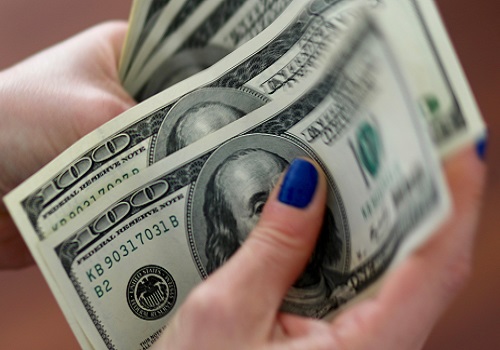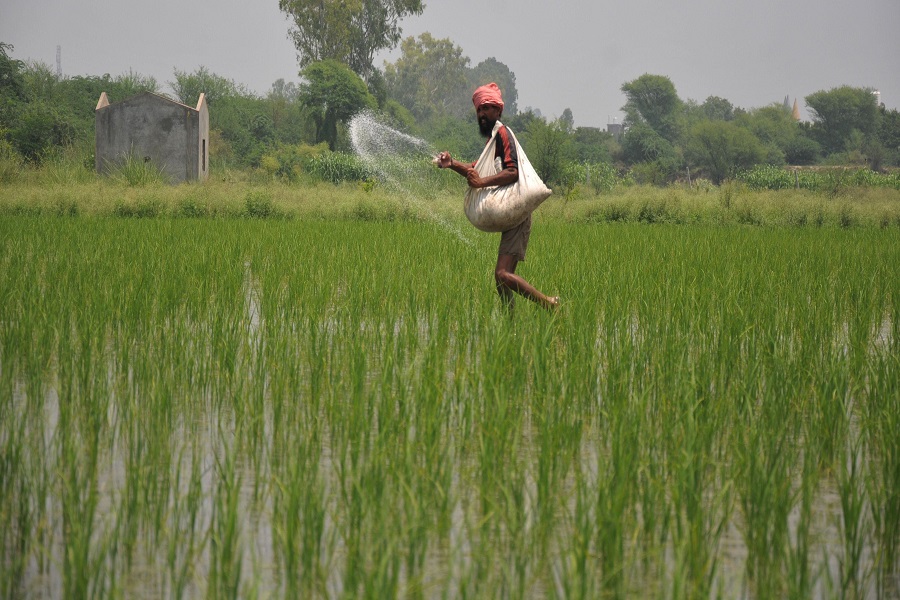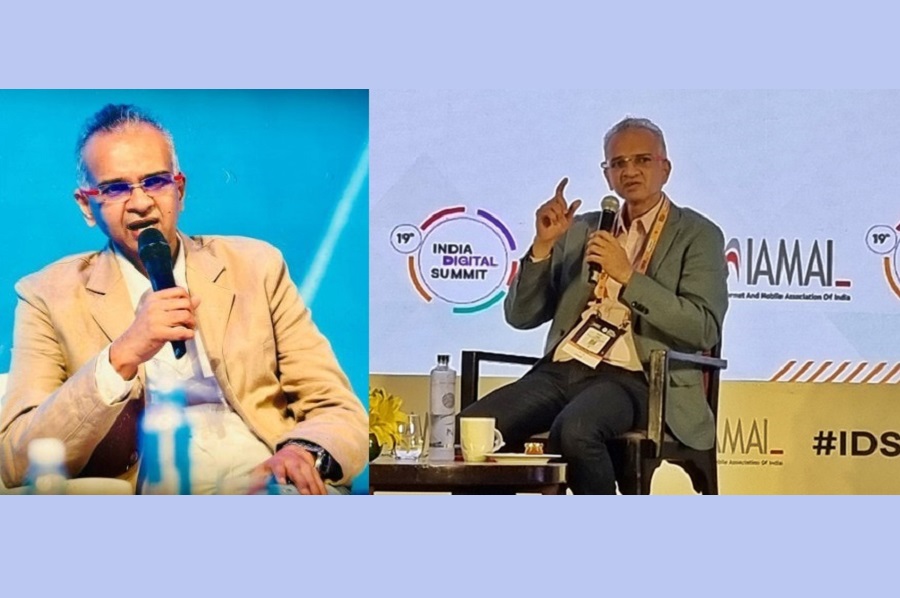Oil and Gas Sector Update : What is OMCs` CMP discounting? - JM Financial Services

Our reverse valuation exercise suggests that, at CMP, OMCs are discounting either: a) sustainable GRM of USD 9-10/bbl (vs. historical GRM of USD 5-7/bbl and JMFe of USD 7.5-9/bbl); or b) sustainable GMM of INR 4-4.5/ltr (vs. JMFe and historical GMM of INR 3.5/ltr). A change in GRM by USD 1/bbl has an impact of 10-20% on EBITDA/TP while a change in GMM by INR 0.5/ltr has an impact of 8-20% on OMCs’ EBITDA/TP. We expect their GRM to normalise to USD 7.5-9/bbl driven by: a) normalisation of diesel cracks due to easing supply side concerns and normalisation of Chinese diesel exports; b) end of windfall tax benefits following normalisation of diesel cracks; and c) narrowing of Russian crude discount. Further, we expect OMCs’ sustainable GMM at the historical INR 3.5/ltr with OPEC+ strong pricing power likely to support Brent ~USD 80/bbl. Moreover, their aggressive capex plans accentuate our key structural concern as many of the projects fail to create long-term value for shareholders, with several of them being undertaken from the country’s strategic energy security perspective. OMCs’ valuations (HPCL 1.5x FY25 P/B; IOCL 1.4x FY25 P/B; and BPCL 1.6x FY25 P/B) are trading at 25-50% premium to historical valuations. Hence, we believe OMCs’ risk-reward is unfavourable and we maintain our SELL rating on IOCL (revised TP of INR 145) and HPCL (revised TP of INR 440) and our HOLD rating on BPCL (revised TP of INR 565). We instead prefer upstream PSUs (ONGC/Oil India) as they are a play on high crude price, with CMP discounting ~USD 65/bbl net crude realisation, and have 4-6% dividend yield.
* OMCs’ CMP is discounting sustainable GRM of USD 9-10/bbl vs. historical GRM of USD 5- 7/bbl; change in GRM by USD 1/bbl has an impact of 10-20% on EBITDA/TP: Our reverse valuation exercise suggests (Exhibit 1-2) that, at CMP, a) IOCL is discounting sustainable gross refining margin (GRM) of USD 9.5/bbl (vs. JMFe of USD 8/bbl and vs. historical GRM of USD 5.5-6.5/bbl); b) BPCL is discounting sustainable GRM of USD 10/bbl (vs. JMFe of USD 9/bbl and historical GRM of USD 6-7/bbl); and c) HPCL is discounting sustainable GRM of USD 9.2/bbl (vs. JMFe of USD 7.5/bbl and vs. historical GRM of USD 5-6/bbl). Every USD 1/bbl change in reported GRM has an impact of: a) 10.3% (or INR 50bn) on IOCL FY25 consolidated EBITDA and 16.1% (or INR 23/share) on TP; b) 9.7% (or INR 24.9bn) on BPCL FY25 consolidated EBITDA and 13.9% (or INR 79/share) on TP; and c) 8.2% (or INR 14.5bn) on HPCL FY25 consolidated EBITDA and 19.5% (or INR 86/share) on TP — Exhibit 3-8.
* Alternatively, OMCs’ CMP is discounting sustainable GMM of INR 4-4.5/ltr vs. vs. historical GMM of INR 3.5/ltr; change in GMM by INR 0.5/ltr has an impact of 8-20% on OMCs EBITDA/TP: Our reverse valuation exercise also suggests (Exhibit 1-2) that, at CMP, a) IOCL is discounting sustainable auto-fuel gross marketing margin (GMM) of INR 4.5/ltr (vs. historical GMM and JMFe of INR 3.5/ltr); b) BPCL is discounting sustainable auto-fuel GMM of INR 4.0/ltr (vs. historical GMM and JMFe of INR 3.5/ltr); and c) HPCL is discounting sustainable auto-fuel GMM of INR 4.2/ltr (vs. historical GMM and JMFe of INR 3.5/ltr). Every INR 0.5/ltr change in auto-fuel GMM has an impact of: a) 7.1% (or INR 34bn) on IOCL FY25 consolidated EBITDA and 10.8% (or INR 16/share) on TP; b) 8.3% (or INR 21.3bn) on BPCL FY25 consolidated EBITDA and 11.9% (or INR 67/share) on TP; and c) 10.5% (or INR 18.6bn) on HPCL FY25 consolidated EBITDA and 20% (or INR 88/share) on TP — Exhibit 9-14.
* We expect OMCs’ GRM to normalise to USD 7.5-9/bbl driven by normalisation of diesel crack and Russian crude discount: OMCs had reported very strong GRM of USD 10-20/bbl in FY23 and FY24 (vs. USD 5-7/bbl historically) driven by: a) record high diesel cracks of (USD 20-35/bbl vs. normalised USD 15/bbl); b) windfall tax benefits that accrued to them because they sourced diesel from standalone refiners; and c) Russian crude discount adding USD 2-4/bbl to OMCs GRM. However, we believe their refining margin will revert to USD 7.5-9/bbl from FY25 onwards driven by: a) normalisation of diesel cracks due to easing supply side concerns and normalisation of Chinese diesel exports (Exhibit 18); b) end of windfall tax benefits following normalisation of diesel cracks (Exhibit 19); and c) narrowing of Russian crude discount (Exhibit 20). Further, there is significant terminal value risk that exists for the refining business due to the long-term threat to global oil demand on account of rising penetration of electric vehicles and alternative fuels (like gas, renewables, etc.). IEA expects global oil demand to peak at 105.7mmbpd in CY28, up only 3.9mmbpd vs. 101.8mmbpd in CY23 as energy transition advances. However, IEA expects net refining capacity addition of 4.5mmbpd till CY28, led by Asia, Middle East and Africa; out of this, 1.3mmbpd refining capacity addition is expected in CY24 — Exhibit 21-24.
* OPEC+ strong pricing power to support Brent ~USD 80/bbl; we expect OMCs’ sustainable GMM at historical INR 3.5/ltr: We continue to believe OPEC+ will continue to use its strong pricing power to support Brent crude price ~USD 80/bbl, which is the fiscal break-even crude price needed by Saudi Arabia (Exhibit 30). The pricing power of OPEC+ has got strengthened over the past 2-3 years due to US oil production continuing to be at ~13.2mmbpd only (vs. pre-Covid peak of ~13.1mmbpd) as US shale investors have become disciplined in capital investment (Exhibit 31-32). We expect OMCs’ sustainable auto-fuel (diesel/petrol) GMM at the historical run-rate of INR 3.5/ltr as the government is highly likely to either cut auto-fuel prices ahead of critical general elections in Apr-May’24 and/or hike auto-fuel excise duty post elections given that strong profits in FY24TD have enabled OMCs to recoup FY23 losses and repair their balance sheets — Exhibit 45. Moreover, OMCs themselves have historically kept GMM only at a normative level to mitigate serious competition from private fuel marketing companies (as private players need higher GMM to break-even as they don’t have the advantage of OMCs’ legacy depreciated retail outlet asset base). This is evident from the private players’ market share in the fuel marketing business, which has stagnated at ~10% in the last few years due to OMCs’ aggressive pricing strategy — Exhibit 38-40.
* Sharp jump in capex guidance accentuates key structural concern for OMCs: Over the past year, OMCs have announced very aggressive capex plans: a) BPCL plans a capex of INR 1,500bn in the next 5 years (INR 490bn on Bina petchem cum refining expansion, INR 260bn on E&P business, INR 260bn on CGD projects, INR 250bn on marketing & pipeline business, INR 100bn on renewables, etc.); b) HPCL has a capex plan of INR 750bn in the next 5 years (50-55% in Marketing segment, 20% in Refining segment, 25-30% in Renewable & gas segment, etc.); and c) IOCL’s capex is likely to also grow from INR 250-300bn annual run-rate (though the company is yet to announce any long-term capex targets). Further, OMCs have historically seen significant cost- and time-overruns in execution of large projects (case in point being HPCL’s Rajasthan refinery project cost jumping to ~INR 730bn vs. original INR 430bn). This accentuates our key structural concern as many of the projects fail to create long-term value for shareholders, with several of them being undertaken from the country’s strategic energy security perspective.
* OMCs risk-reward appears unfavourable; instead prefer upstream PSUs (ONGC/Oil India): We have raised OMCs’ FY25-26 EBITDA estimate by 10-14%, building in higher GRM of USD 8.0/bbl for IOCL (from USD 7.0/bbl assumed earlier), USD 9.0/bbl for BPCL (from USD 8/bbl) and USD 7.5/bbl for HPCL (from USD 7/bbl). Hence, aided by higher value of listed investment (which we value at CMP less 20% holding discount), our TP has been revised to: a) INR 145/share for IOCL (from INR 115/share), b) INR 440/share for HPCL (from INR 370/share); and c) INR 565/share for BPCL (from INR 460/share). However, after the strong rally in the last 4-5 months, OMCs’ valuations are trading at 25-50% premium to historical P/B valuations: a) HPCL is trading at 1.5x FY25 P/B (vs. historical average of 1.0x); b) IOCL is trading at 1.4x FY25 P/B (vs. historical average of 1.0x); and c) BPCL is trading at 1.6x FY25 P/B (vs. historical average of 1.3x) — Exhibit 48. Hence, we believe OMCs’ risk-reward is unfavourable and maintain our SELL rating on HPCL and IOCL and our HOLD rating on BPCL. We instead prefer upstream PSUs (ONGC/Oil India) as they are a play on high crude price, with CMP discounting ~USD 65/bbl net crude realisation, and have 4-6% dividend yield. ? Key risks to our call: a) OMCs’ GRM continuing to be higher due to sustained high diesel cracks of +USD 20/bbl and/or high sustainable Russian crude discount; b) OMCs GMM being higher than INR 3.5/ltr aided by continued delay in fuel price cuts and/or excise duty hike; and c) stabilisation of crude price ~USD 60-70/bbl could strengthen earning visibility of the marketing business and drive its re-rating.
What is OMCs CMP discounting?
Our reverse valuation exercise suggests (Exhibit 1-2) that, at CMP, a) IOCL is discounting sustainable GRM of USD 9.5/bbl (vs. JMFe of USD 8/bbl and vs. historical GRM of USD 5.5- 6.5/bbl); b) BPCL is discounting sustainable GRM of USD 10/bbl (vs. JMFe of USD 9/bbl and historical GRM of USD 6-7/bbl); and c) HPCL is discounting sustainable GRM of USD 9.2/bbl (vs. JMFe of USD 7.5/bbl and vs. historical GRM of USD 5-6/bbl). Alternatively, the exercise suggests that, at CMP, a) IOCL is discounting sustainable auto-fuel GMM of INR 4.5/ltr (vs. historical GMM and JMFe of INR 3.5/ltr); b) BPCL is discounting sustainable auto-fuel GMM of INR 4.0/ltr (vs. historical GMM and JMFe of INR 3.5/ltr); and c) HPCL is discounting sustainable auto-fuel GMM of INR 4.2/ltr (vs. historical GMM and JMFe of INR 3.5/ltr).
To Read Complete Report & Disclaimer Click Here
Please refer disclaimer at https://www.jmfl.com/disclaimer
SEBI Registration Number is INM000010361










More News

Insurance Sector Update : GST 2.0 in insurance ? Do not miss the wood for the trees By Emkay...












